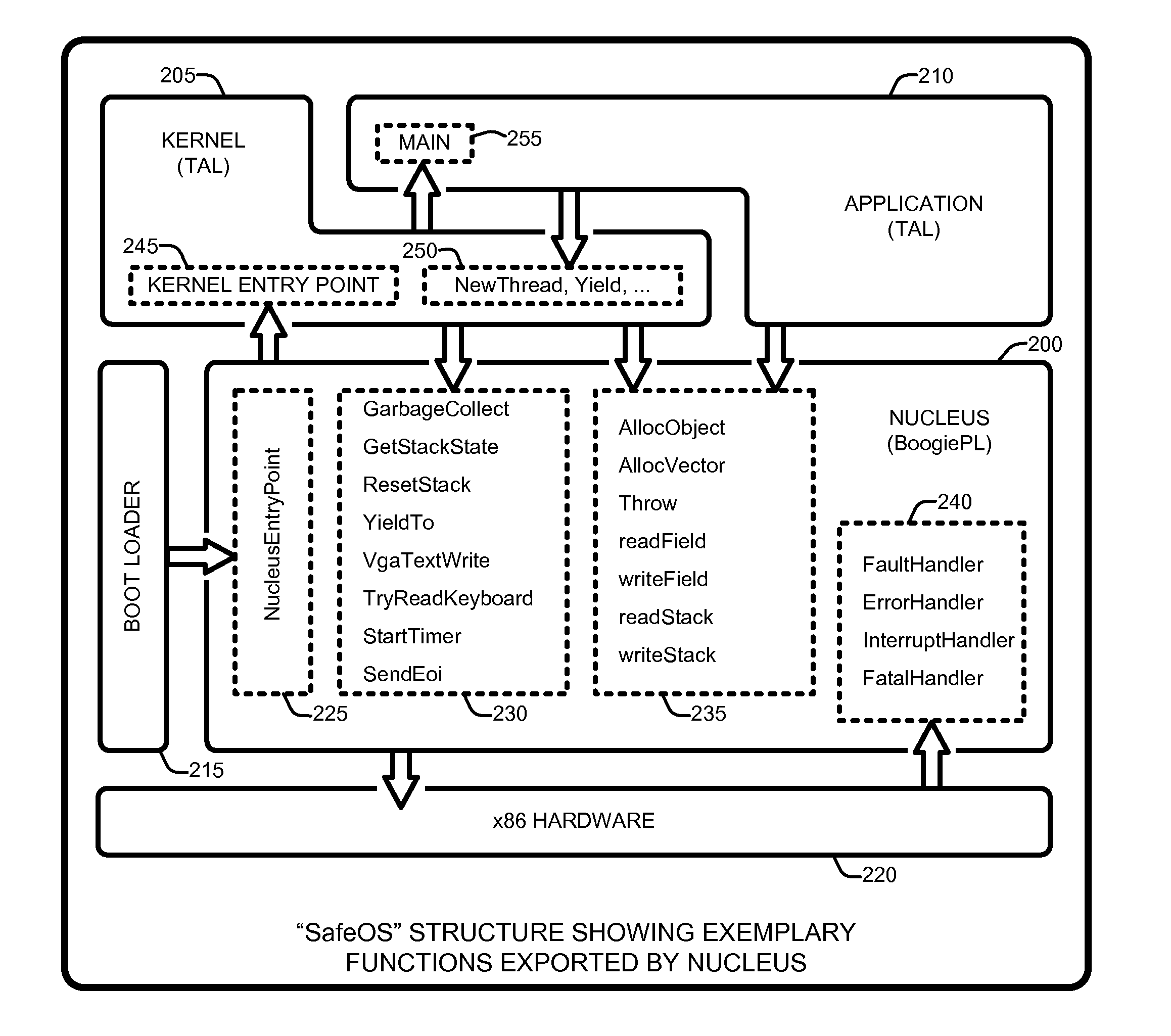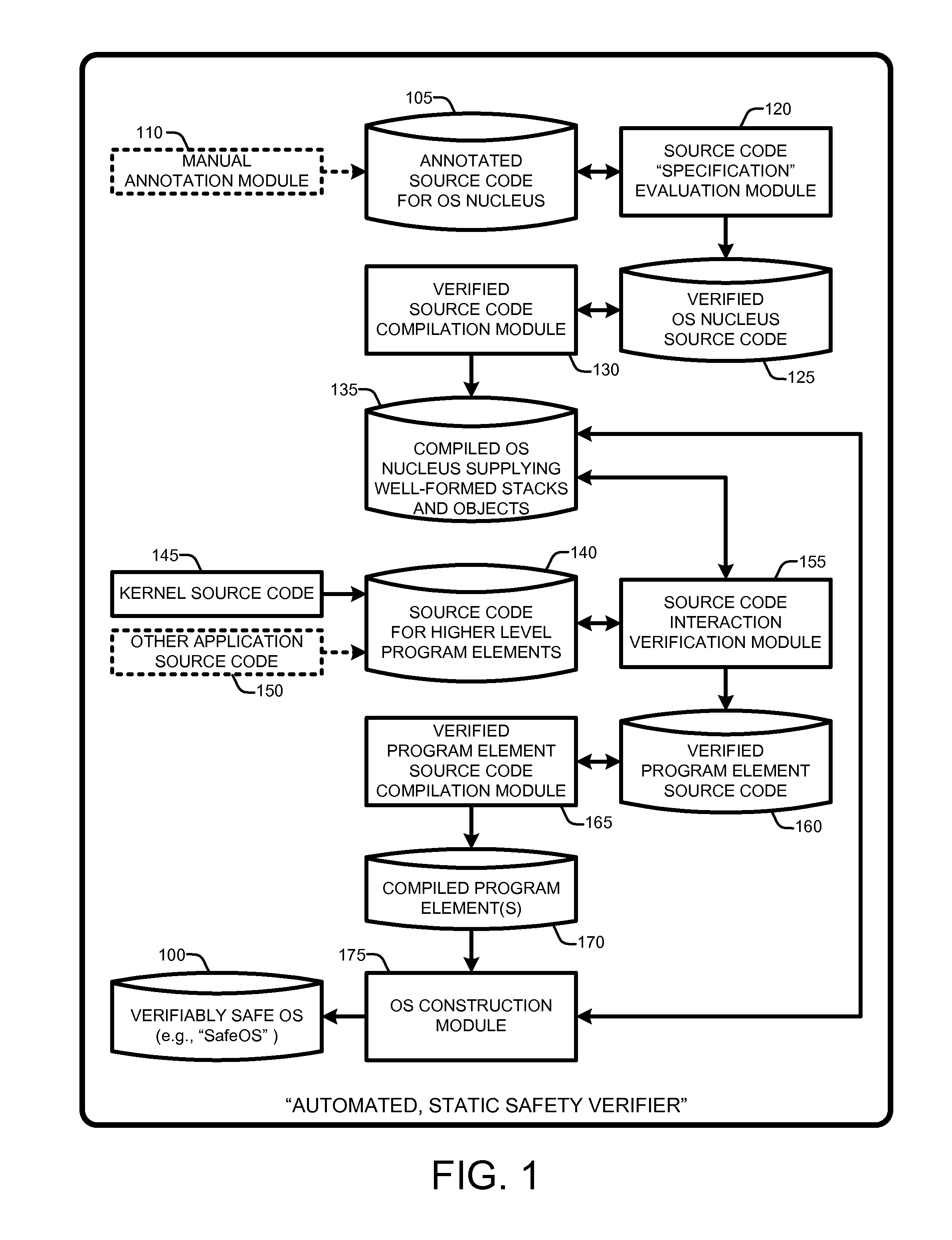Automated verification of a type-safe operating system
a type-safe operating system and automatic verification technology, applied in the field of automatic verification of type-safe operating systems, can solve the problems of low-level software still suffering, users are vulnerable to network attacks, and users endure frustration and potential data loss, and achieve the effect of verifying the safety of the kernel and applications, and the safety and correctness of the nucleus
- Summary
- Abstract
- Description
- Claims
- Application Information
AI Technical Summary
Benefits of technology
Problems solved by technology
Method used
Image
Examples
Embodiment Construction
[0024]In the following description of the embodiments of the claimed subject matter, reference is made to the accompanying drawings, which form a part hereof, and in which is shown by way of illustration specific embodiments in which the claimed subject matter may be practiced. It should be understood that other embodiments may be utilized and structural changes may be made without departing from the scope of the presently claimed subject matter.
[0025]1.0 Introduction:
[0026]In general, an “Automated, Static Safety Verifier,” as described herein, uses typed assembly language (TAL) and Hoare logic to achieve highly automated, static verification of both type and memory safety of an operating system. The “Automated, Static Safety Verifier” uses various techniques and tools to mechanically verify the safety of every assembly language instruction in the operating system, run-time system, drivers, and applications, with the exception of an operating system boot loader. An example of a saf...
PUM
 Login to View More
Login to View More Abstract
Description
Claims
Application Information
 Login to View More
Login to View More - R&D
- Intellectual Property
- Life Sciences
- Materials
- Tech Scout
- Unparalleled Data Quality
- Higher Quality Content
- 60% Fewer Hallucinations
Browse by: Latest US Patents, China's latest patents, Technical Efficacy Thesaurus, Application Domain, Technology Topic, Popular Technical Reports.
© 2025 PatSnap. All rights reserved.Legal|Privacy policy|Modern Slavery Act Transparency Statement|Sitemap|About US| Contact US: help@patsnap.com



